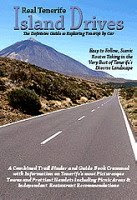May is a quiet month in Tenerife for visitors. The British and German swallows who spend their winters at the coastal resorts have flown back to their homeland and the Spanish mainlanders won’t descend in their thousands (to the north anyway) until late June.
Many restaurateurs in the north of Tenerife choose May to take their holidays and some restaurants in Puerto de la Cruz can be shut for a whole month.
It’s a quiet month for sure and for anyone who opts to stay in somewhere like Puerto de la Cruz it might seem as empty as a graveyard…if they simply stick to the sort of hours and patterns they keep at home.
Nightlife in Puerto de la Cruz
Watching the football in the bar on Sunday I heard a British visitor comment that the town was dead. He mentioned that he’d been to the Shamrock Bar, an Irish hostelry in the more modern part of town, close to many hotels. He’d arrived at about nine and was the first person in the bar.
It’s not the first time I’ve heard people commenting that Puerto is quiet at night. A couple of years ago, again whilst watching football on a Sunday, another British holidaymaker had mentioned that the British bar he’d spent his Saturday night in had been nearly empty; he also commented that there wasn’t much nightlife in Puerto. This time it was in November, the other ‘quiet’ month.
It’s interesting how different people form different perspectives about the places they visit.
Take visitor number two. At the same time he was sitting with a handful of other punters in the bar, it was the Fiesta of San Andrés in the old town. There were live bands playing in Plaza del Charco and kiosks selling wine, chestnuts and sardines beside the harbour. The place was buzzing.
Visitor number one was a bit different, there weren’t any live bands playing in the harbour, but by the time he wandered back to his hotel, grumbling about how there was no-one around, the local population were probably only just coming out to play.
 How to Go Native
How to Go NativeSome of our visiting friends have been horrified when we told them that there was no point in going out till midnight. But the fact is that the liveliest bars in the bigger authentic Canarian towns don’t hit their peak till after one in the morning. Because of this many, many visitors miss the best of the nightlife. The other thing is that much of the fun doesn’t take place inside; it takes place in the streets.
If you want to really ‘go native’ you have to set aside your normal patterns and embrace those of the place you’re visiting.
On Sunday after the football finished we left the bar and wandered back to the old town via the harbour. It was about seven o’clock and the low sun bathed the cobbles in a warm golden light. The harbour was packed with people; there was a Brazilian butacada competition taking place beside the old customs house and young Canarios stood on the harbour wall swaying in time to the seductive samba rhythms. The place had a wonderful atmosphere which felt more South American than Spanish.
Of course from his position on his stool, the man in the bar wouldn’t have been aware of any of this.









